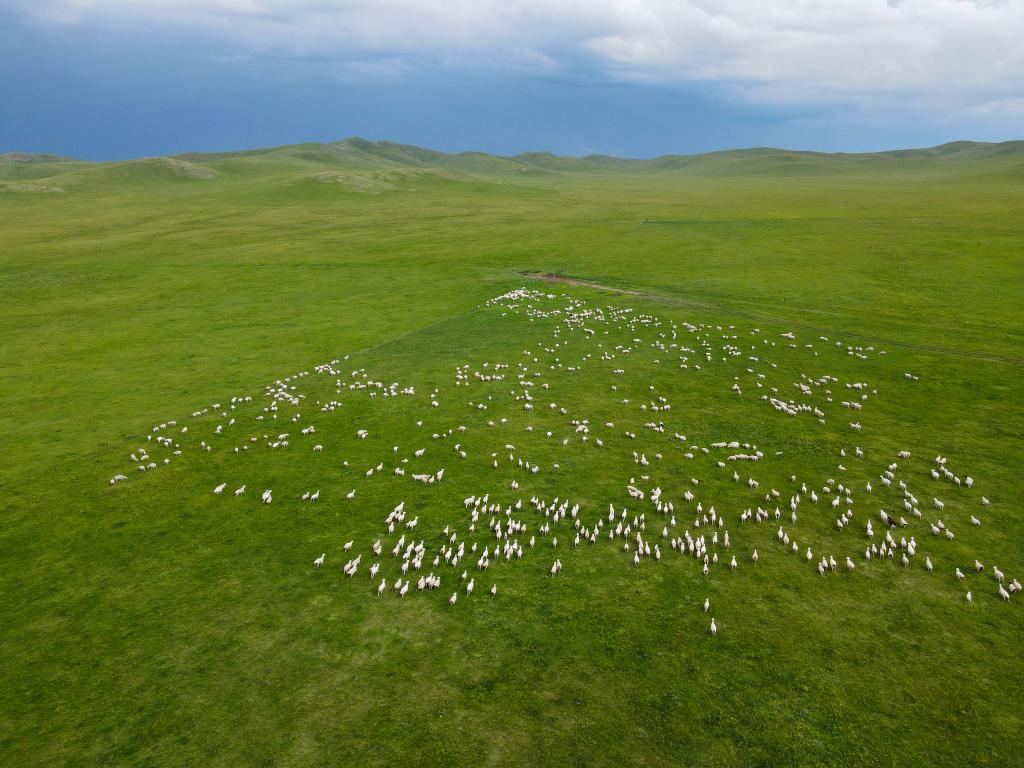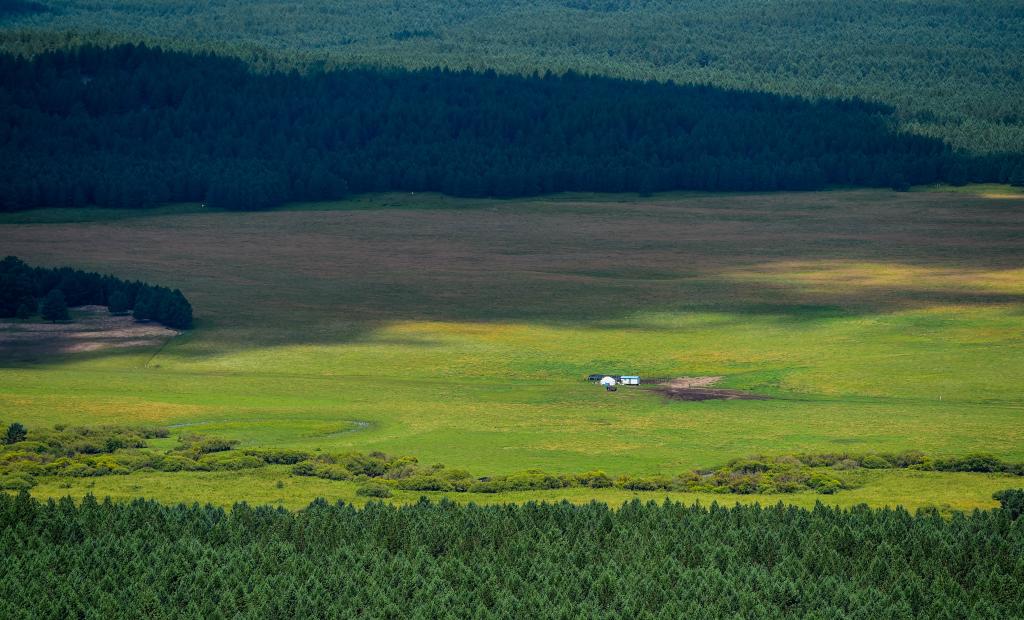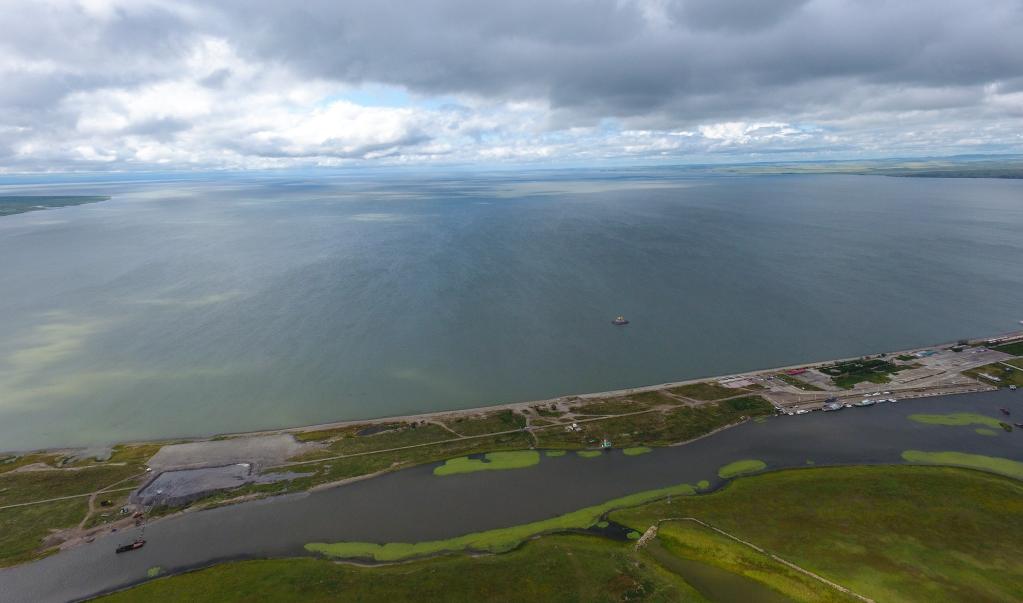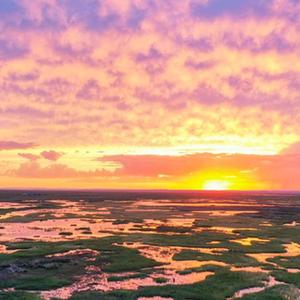China's ten years · China Story | Inner Mongolia: Create a brighter and beautiful landscape in northern China
Author:Xinhuanet Time:2022.08.17
Xinhua News Agency, Hohhot, August 17th: Inner Mongolia: Create a brighter and beautiful landscape in northern China
Xinhua News Agency reporter
In the early autumn, the grassland was still lush. In the Inner Mongolia Autonomous Region, the Tongwu Zhuqin Banner Town of the East Wushuqin in the Inner Mongolia Autonomous Region, the 52 -year -old Hasbayar rode on a motorcycle early in the morning and slowly rushed the sheep from the shed to the grassland. The sheep stopped to eat grass, and he sat on the ground and looked into the distance. "The growing growth of the grass is better year after year, and the green is so comfortable." He said.
"Green" is the background of Inner Mongolia. It has rich natural resources such as grasslands, forests, and lakes. It is the largest and most complete ecological function area in northern China. However, affected by natural factors and human activities, the ecological environment worsen.

This is a grassland (drone photo) shot in the setting sun in Dongwu Zhuqin Banner, Inner Mongolia on July 27, 2022
Since the 18th National Congress of the Communist Party of China, Inner Mongolia has strengthened the governance of ecological environmental protection and has made efforts to build a Great Great Great Wall in northern China. At present, the forest coverage rate of the autonomous region reaches 23%, an increase of 1.97 percentage points from 2012; the comprehensive vegetation cover of the grassland is 45%, an increase of 5 percentage points from 2012. The lake where the atrophy and pollution aggravated were restoring their vitality.
Grassland green onion, beef sheep strong
More than 20 years ago, due to the drought and rain and overloaded over the past, there were signs of desertification and saltization of some grasslands in Inner Mongolia. More than 5,000 acres of grassland contracted by Hasbayar, in some places exposed sand.

This is a herd (drone photo) on the grassland (drone photo) on the grassland of Dongwu Zhuqin Banner, Inner Mongolia on July 27, 2022
In 2011, China launched the grassland ecological protection subsidy and award policy, and implemented measures such as banned animal husbandry subsidies and grass and livestock balance rewards in 8 provinces and regions including Inner Mongolia and Xinjiang. At present, about 404 million acres of grasslands in Inner Mongolia can be restored through banned animal husbandry, and 616 million acres of grasslands can be used reasonably through grass and livestock balance, and more than 1.4 million farmers and herdsmen have benefited.
The grassland contracted by Hasbayar implemented a grassland balance policy, and the average annual award was more than 20,000 yuan. Since 2011, he has gradually reduced the more than 700 sheep to about 400. "Two or three years later, Xiao Cao's head and density increased significantly. The grass that was scratched from fed her sheep could be sold," he said.
In 2018, Xilin Guo Le Alliance began to implement the spring -fired retirement policy of pastoral grass, involving more than 200 million acres of grasslands and more than 86,000 herdsmen. "Hugh Mu got better grassland, we got more benefits." Hasbayar said.
Inner Mongolia takes scientific means to repair the grassland with severe degradation and ecology that is difficult to recover naturally.
On the grassland of the Wulaga Management Zone of Xilingule League, there have been wind erosion pits that are difficult to recover naturally in some places. In order to effectively manage these "alopecia areata", in 2014, Mengcao Ecological Environment (Group) Co., Ltd. set up a local grassland ecosystem research institute to conduct plant diversity surveys. According to different terrain and degraded causes and level Comprehensive technical measures such as biological sand barriers, no cultivation and sowing, the treatment of nearly 30,000 acres of sandy grassland, of which severe sandy grassland average vegetation coverage increased from 15%to 50%.
Forest and lush value high value
In the early autumn, the colorful leaves of Daxing'an Ridge Inner Mongolia were all over and the scenery was charming. With the increase of tourists, Geng Hongguang went to the forest patrol he was responsible for every morning.

Photo by Lian Zhen, a reporter from a Jingxinhua News Agency in Inner Mongolia and Ertulin Farm
Geng Hongguang is an employee of Genhesen's Wulukuma Farm and has worked in the forest area for 30 years. "In the past winter, more than 10,000 cubic meters of trees could be rated in winter, which was very fulfilled." Geng Hongguang said that he was also worried, "the wind in the forest is bigger year by year, indicating that the forest becomes sparse during that time. , The ecological environment is worse. "
In 2015, the key state -owned forest area of Daxing'an Mountains in Inner Mongolia completely stopped natural forest commercial harvesting, and forestry workers became forest management guards. They carried out comprehensive cultivation in the winter, built in summer, and patrolled in the forest every day to prevent the occurrence of dismissal and forest fires.
Since the stopping, under a number of protection measures and restoration projects, the key state -owned forest area of Daxing'an Mountains in Inner Mongolia completed 290.19 million mu, artificial afforestation 180,600 mu, vegetation recovery of 168,300 mu, and 255,500 acres of forests returned. The amount exceeds 12 million cubic meters.
"In the mountains of the ecology, there is my sweat that is very proud." Geng Hongguang said.
Relying on high -quality ecological resources, the Inner Mongolia Forest Industry Group, as the main body of ecological protection and construction of Daxing'an Mountains, Inner Mongolia, began to explore carbon exchange transactions. Since the pilot work of the forestry carbon exchange project in 2014, the cumulative sales amount of carbon exchange products exceeded 32 million yuan.
Bird rippling birds flying
Lake is known as the "emerald" embedded on the earth. In the past ten years, Inner Mongolia has continuously increased the ecological governance of key lakes, and gradually resumed the natural scenery of lakes, shore green, and scenery.

This is taken by Peng Yuan, a reporter from Hulun Lake (UAV photo) taken on August 28, 2019
Daihai is the third mainland lake in Inner Mongolia, located in Liangcheng County, Ulanchabu City. Beginning at the end of the 20th century, the area of Daihai was shrinking year by year, and the water quality continued to deteriorate.
In 2016, Inner Mongolia fully launched the Daihai Governance Project, and adopted measures such as zero -water and cultivated land for industrial water and cultivated land to effectively protect the water resources. The 66 -year -old Li Xiuxiu lives in Sansumu Village, Daihai Town, Liangcheng County, 3 kilometers away from Daihai. In the past, she mainly planted high -water crops such as potatoes and corn. In 2016, she actively responded to the "water -to -drought" policy, transformed her 16 acres of water into a dry land, and controlled the use of fertilizer, pesticide and ground membrane.
"Although the output has declined, the cost is also reduced by half, and the government provides free organic fertilizer, and the" water -changing drought "subsidy of 500 yuan per acre is higher than before, and the environment of Daihai has also improved." Li Xiuxiu has also improved. " Say.
This is a photo of Xinhua News Agency, a reporter of Xinhua News Agency, a reporter of the Hulunbuiren River, Hulunbuiren, Inner Mongolia

At present, the water surface area of the sea is stable at 50 square kilometers, the water quality decline is controlled, and the number of fish such as fish in the lake has increased. Compared with 2016, the vegetation coverage in the basin increased by 2 percentage points, and the species of migratory birds increased by 23.
In addition to the overseas, the largest lake in Inner Mongolia has implemented a series of comprehensive protection and restoration measures. The waters area increased from more than 1,700 square kilometers in 2012 to more than 2,200 square kilometers, and the wetland ecology has gradually recovered. (Text, video reporter: Yu Jia, Harina, Zhao Zehui, Wang Xuebing, Wang Chunyan, He Shushen)
[Editor in charge: Wang Yan]

![]()
- END -
The zoo responds to "tiger bone is as thin as firewood": age is too old, and has been adjusting the eating plan for it

Jimu Journalist Yao Yan Liu XunruiRecently, some netizens broke the news that the ...
Sun Xueshi led the team to Xinhu Town to visit the People's Congress of the People's Congress for a centralized visit to the District People's Congress

On the morning of July 15th, Sun Xueshi, deputy director of the Standing Committee...